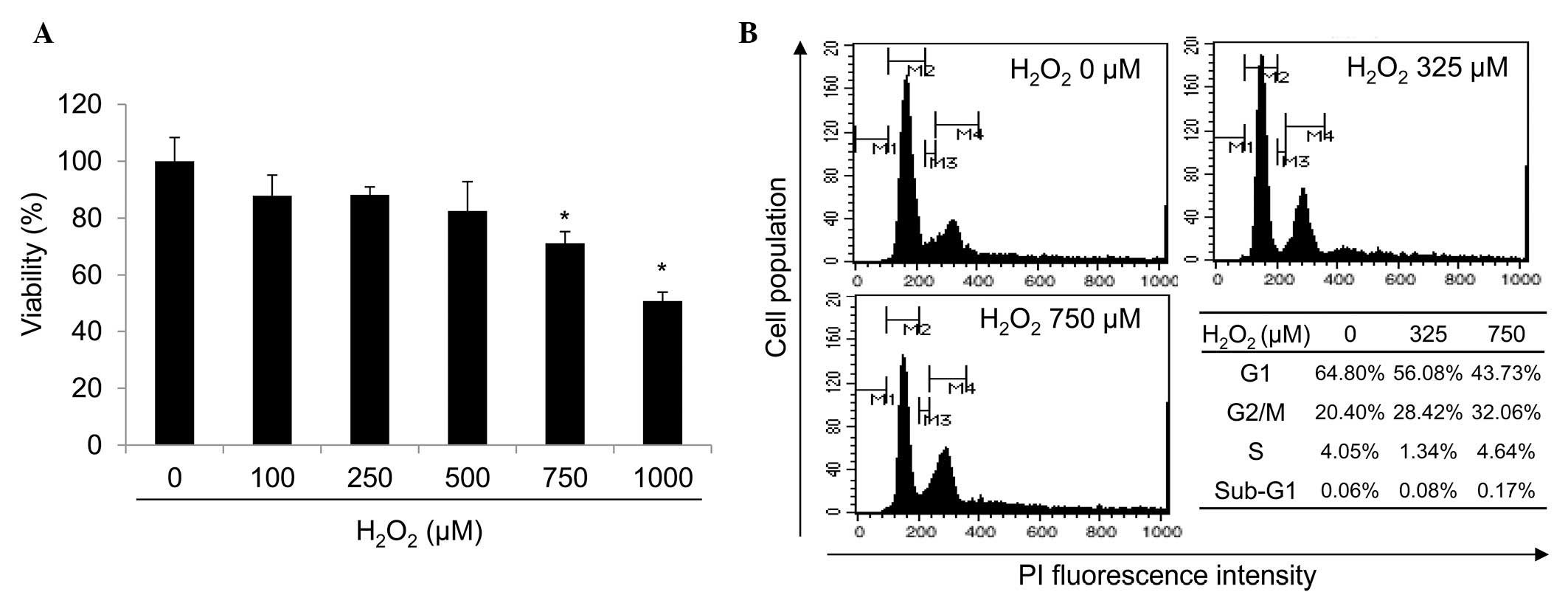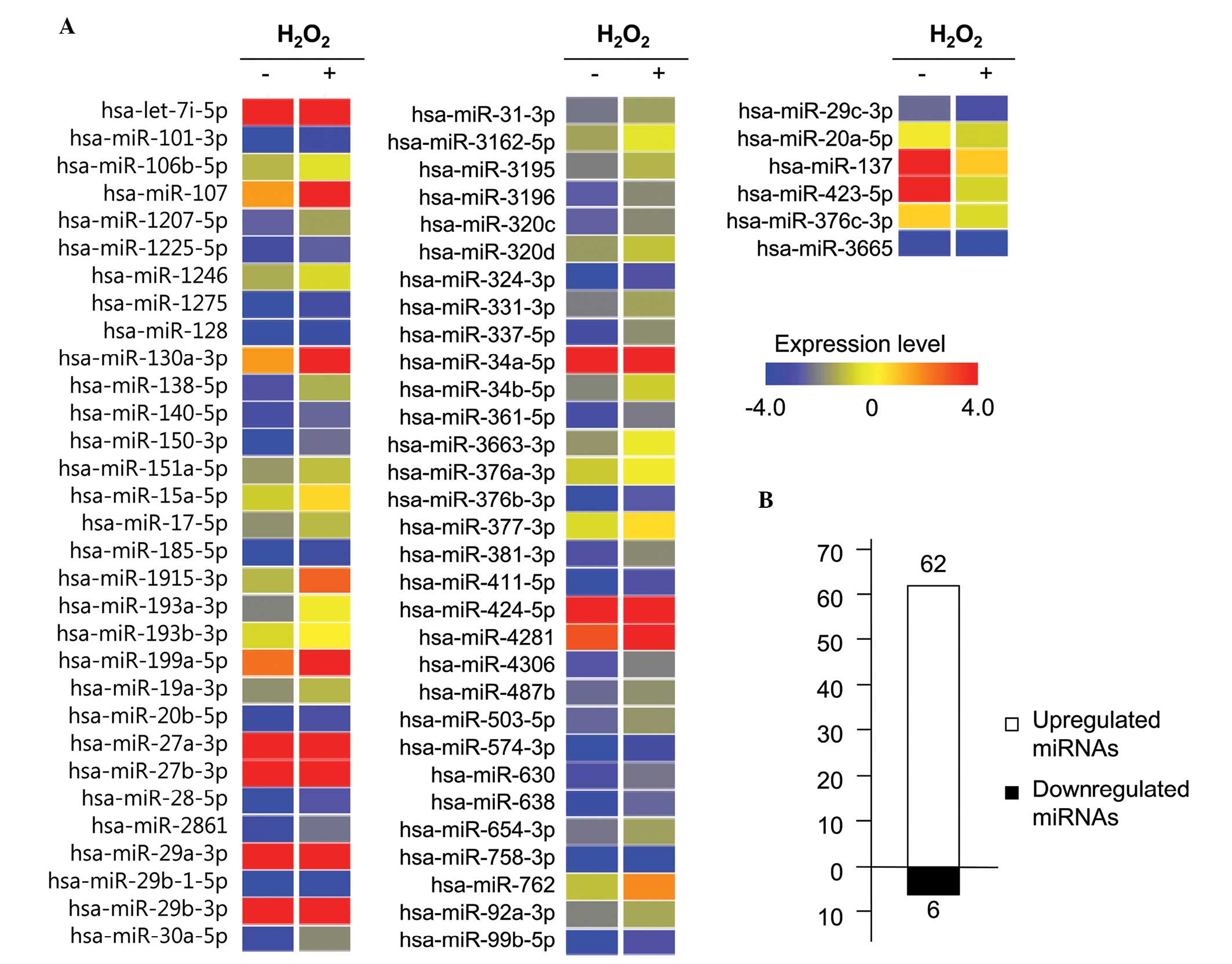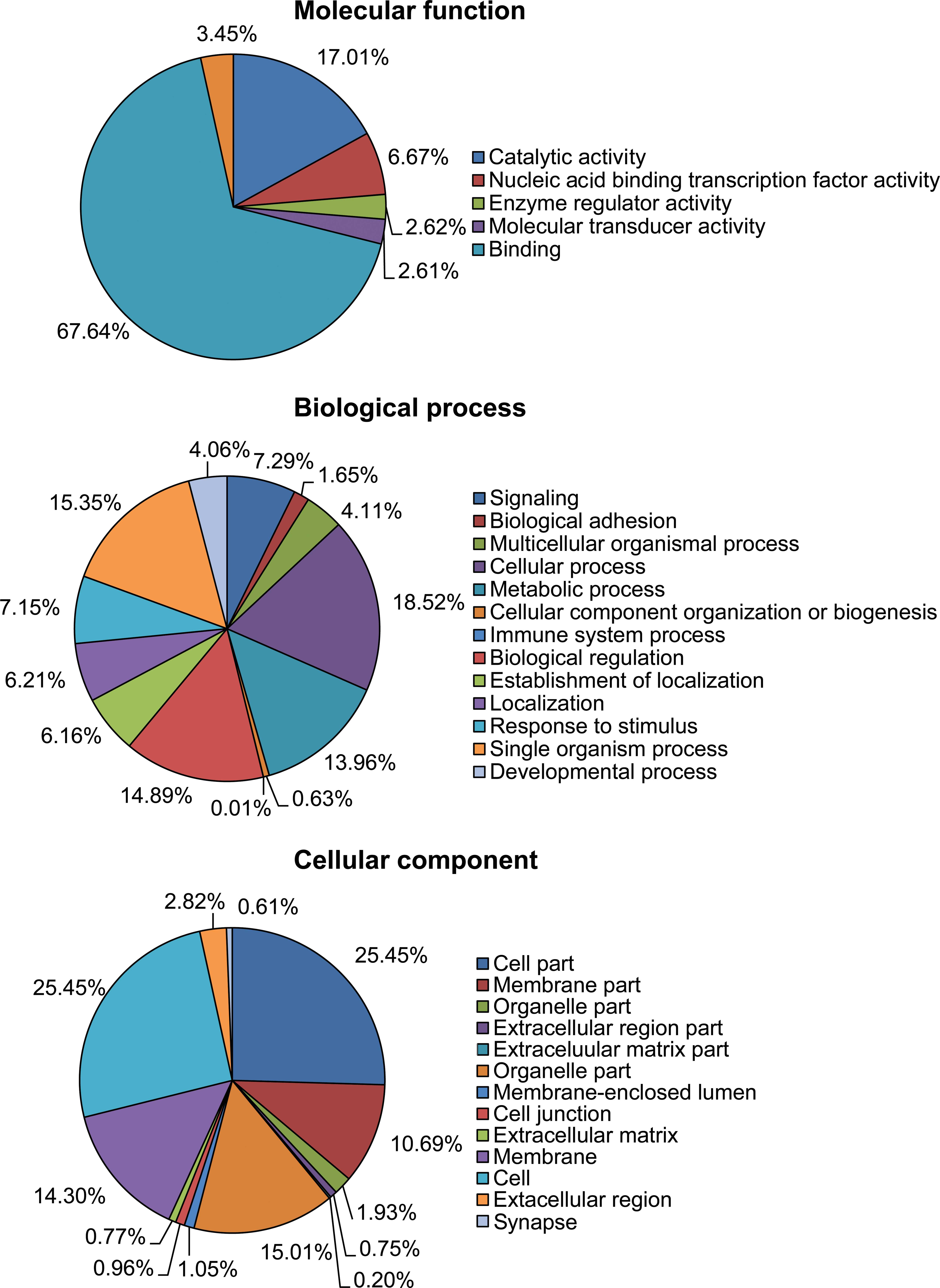|
hsa-miR-376c-3p | JUB, CCNB3, CCNT2,
NOLC1, MTSS1, SIAH2, AURKA, VHL, HMGA2, CHAF1B, ERBB2IP, PTEN,
NPAT, PAFAH1B1, GMNN, XRN1, MPHOSPH8, SPIN1, POLS, LZTS1, CHEK2,
SASS6, GADD45A, MAPRE1, KANK1, SASH1, APPL1, ANXA1, HPGD, SEP14,
MN1 | EGLN3, RFFL,
ACVR1C, PARP4, CNTN4, GADD45A, DAPK2, TNFAIP8, SGMS1, ARF6, MCL1,
APIP, GULP1, RHOT1, DUSP22, ROCK1, ATXN1, SHB, SIAH2, ACTC1,
PHLDA2, FASTKD3, CASP3, CASP7, AIFM1, ATG12, CD5L | MARK4, CXCL5,
BMPR2, SSR1, STAT5A, TGFBR1, TNFSF4, HMGA2, SOCS2, SOCS6, CD86,
CD47, MORF4L2, DNAJA2, CFDP1, TNFSF13B, TBC1D8, SOCS4, FGF7, FLT1,
FLT3, RBM9, ANXA1, IL2, CXCL10, KRAS, NOV, IL17RB |
| hsa-miR-423-5p | JUB, CCNF, PKMYT1,
MPHOSPH1, DMTF1, SUV39H1, TACC1, DBF4B, BIN3, MAPK3, MAPK4, PTCH1,
RAP1A, UPF1, TSPYL2, NF2, PAFAH1B1, CINP, SUFU, PFDN1, RBM5,
CDKN1A, HMG20B, TXNIP, SPIN1, RCC1, FOXN3, LZTS1, PMF1, E2F7,
KCTD11, SNF1LK, DAB2IP, CYLD, DDX11, E2F2, EP300, PDS5A, NSL1,
SGSM3, BIRC5, INCENP, IRF1, MCM7, MN1, NBL1, NBN, SEP3, SEP8 | BCL2L11, IL24,
DIDO1, RFFL, CLU, ACVR1C, DAP, DEDD2, DOCK1, E2F2, EIF5A, EP300,
ERN1, PTK2B, FOSL2, CYFIP2, CIDEB, HIPK2, SAP30BP, CARD10, HTT,
KCNIP3, HIP1, BIRC5, IAPP, IL17A, LTBR, MDM4, MLL, NGFR, NDUFA13,
PDCD1, RNF216, PPARD, PRKCG, BAG1, BCL2L1, RTKN, NOD2, BNIP1, BOK,
PRDX2, CACNA1A, BCL2L14, BIRC7, CASP2, PLA2G6, TRAF7, AIFM2,
LGALS12, RIPK1, TNFSF12, TNFRSF14, TNFRSF10D, SQSTM1, NOL3, BMF,
DNAJA3, TAOK2, NTN1, BRE | C19orf10, RAC2,
SHC1, STAT5A, STAT5B, TGFBR2, VEGFB, PROK1, CUL3, CDC2L5, FGF18,
NRP1, SOCS3, SCGB3A1, S1PR2, TAOK2, CIAO1, HTRA3, NTN1, CLU, ADM,
CSF1, ADRA1D, KCTD11, CTF1, ADRA2A, DDX11, DHPS, S1PR3, PTK2B,
FOXO1, FLT3LG, RBM9, HOXC10, VSX2, IGF1, IGFBP6, KRT6A, MAFG, ODC1,
PDGFRB, C9orf127, IL17RB, CCDC88A, PRKCQ |
| hsa-miR-3665 | - | - | - |
| hsa-miR-20a-5p | PARD6B, JUB, RUNX3,
CDC23, PCAF, BCL10, CCND2, CCNG2, RNF8, CCNT2, PKMYT1, ZNF830,
NEK9, KIF23, RASSF2, RB1CC1, SEP7, CDC25A, DLEC1, DMTF1, PAPD5,
BMP2, STK11, TACC1, BUB1, VHL, WEE1, PTP4A1, SUV39H2, MAP9, PPP6C,
ERBB2IP, MAPK1, MAPK4, PCNP, PTEN, RAD17, RAP1A, RB1, RBL1, RBL2,
CCND1, TIPIN, SEP6, NPAT, PAFAH1B1, FZR1, ZAK, XRN1, CHAF1A,
CDKN1A, TXNIP, CETN2, SEP2, CIT, TUSC2, SNF1LK, CYLD, E2F1, E2F3,
FANCD2, C11orf82, HEPACAM, MAPRE1, MAPRE3, SEP9, PDS5A, SASH1,
CLASP1, RABGAP1, GAK, NSL1, APPL1, FBXO5, CKAP2, PDCD4, C13orf15,
GRLF1, RACGAP1, BIRC5, TMPRSS11A, IRF1, MCC, MCM3, NBL1 | NOD1, FASTK, EGLN3,
NLRP3, E2F1, EIF4G2, C11orf82, CARD8, ACIN1, FAIM2, SULF1, RYBP,
SGMS1, MAGI3, CKAP2, GJA1, TNFRSF21, PDCD4, BIRC5, APP, MCL1, MDM4,
MAP3K5, BCL2L15, OSM, SH3GLB1, PDE1B, ZAK, RHOT1, BCAP29, PTGER3,
BCL2, PERP, ISG20L1, BNIP2, TNFAIP3, SLTM, C10orf97, RNF34, FXR1,
CASP2, PLA2G6, CASP7, CASP8, CUL1, AIFM2, TNFRSF10D, TNFRSF10B,
IER3, SQSTM1, SGPL1, TAX1BP1, BCL10, RABEP1, ATG12, DEDD, CD5L,
STK17B, TP53INP1, ATG5, LITAF, TRAF4, SLK | PURA, BCL2, CXCL5,
BMPR2, SSR1, TBX3, TGFBR2, TSG101, CAMK2D, ITCH, CDCA7, BRMS1L,
CUL3, CCND2, S1PR2, SOCS6, ARHGEF11, DNAJA2, CFDP1, HOXB13,
MORF4L1, TBC1D8, CHRNA7, S1PR3, ERBB3, HEPACAM, FGF4, FGF7, LRP12,
IGFBP7, LIF, LIFR, OSM, DERL2, CRIM1, ING3, TIPIN, PPP2CA |
| hsa-miR-29c-3p | PPM1D, CDC23,
CCND2, CCNF, UBA3, CCNT2, AURKB, HDAC4, DCLRE1A, SUPT5H, TACC1,
PTP4A1, CDC7, SMPD3, RCC2, PTEN, NEDD9, ZAK, XRN1, CDK2, CDK6,
HTATIP2, GREF1, STAG2, SEP9, DBF4, MAPRE2, FOXN3, E2F7, SLC5A8,
AHR, VASH1, MAPRE1, CLASP2, SEP6, PPP1R13B, MCC, MLF1, NASP | FEM1B, HTATIP2,
IL24, SLC5A8, AHR, FOXO3, PPP1R13B, SIRT1, ZNF346, CECR2, BIRC2,
FAS, IL2RA, MCL1, SH3GLB1, ZAK, CYCS, DIABLO, DUSP22, BIRC6, BAK1,
ATXN1, CIDEC, SGK1, ISG20L1, TNFAIP3, TNFRSF1A, TRAF5, FAM130A1,
CASP7, AIFM2, BMF, RABEP1, TP53INP1, TRAF4, SLK | BIRC6, PURA, TRAF5,
VEGFA, EPC1, CDC7, CREG1, CCND2, MORF4L2, CDK2, MORF4L1, CHRNA7,
RBM9, IFNG, IGF1, LIF, LIFR, NDN, NEDD9, PDGFRB, ING3, PPP2CA |

















